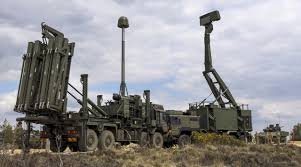The United Kingdom has agreed to send Typhoon fighter jets to Poland as part of NATO’s “Eastern Sentry” mission, a move aimed at strengthening Europe’s air defence in response to rising tensions with Russia.
The deployment follows repeated Russian drone incursions into Polish and Romanian airspace, incidents that NATO allies view as deliberate attempts to test the alliance’s readiness. Officials say the British jets will bolster air policing efforts, ensure rapid interception capability, and reassure NATO’s eastern members of collective security.
Defence officials in London described the decision as a clear signal of solidarity with Poland and other front-line allies. They emphasized that NATO will continue to respond firmly to any airspace violations, viewing them as threats not just to individual nations but to the alliance as a whole.
The “Eastern Sentry” mission involves coordinated air patrols, intelligence sharing, and rapid response drills across NATO’s eastern flank. The addition of UK Typhoons is expected to enhance the alliance’s ability to detect and deter further incursions, particularly as Russia intensifies military operations near its western borders.
Analysts note that the deployment represents more than just a tactical reinforcement. It also underscores Europe’s growing defense cooperation in the face of Russian aggression. By increasing its military footprint in Poland, the UK joins Germany, France, and other allies that have boosted their presence in the region over the past year.
For Poland, the move offers both practical protection and symbolic reassurance. Polish officials have repeatedly warned that Russia’s drone activity poses a direct threat to national sovereignty. They argue that stronger NATO coordination is essential to deter escalation and prevent accidents that could trigger wider conflict.
Romania has voiced similar concerns, reporting multiple drone fragments landing on its territory in recent months. The incursions, while not resulting in direct casualties, highlight the risks of spillover from the ongoing war in Ukraine. NATO officials stress that the alliance remains committed to defending every inch of allied territory.
The UK’s involvement also reflects its broader strategy of deepening ties with Eastern Europe. British forces have been active in training exercises, intelligence operations, and joint deployments aimed at reinforcing NATO’s eastern defenses. Officials in London argue that such steps are necessary to uphold European security at a time of global instability.
Critics caution that while deployments strengthen deterrence, they also risk further provoking Moscow. Russia has long denounced NATO’s military build-up near its borders, framing it as evidence of Western hostility. The Kremlin is likely to view the UK’s move as another escalation in a conflict that continues to spill beyond Ukraine’s battlefield.
Despite these concerns, NATO leaders insist the deployments are defensive in nature. They argue that a visible, credible military presence is essential to maintaining deterrence and avoiding miscalculations that could spark a larger crisis.
With UK Typhoon jets now joining NATO’s “Eastern Sentry” mission, Europe’s air defence posture takes on greater weight. The move reflects a shared determination to respond to Russia’s provocations, strengthen alliance unity, and protect the skies over Poland and its neighbors.







